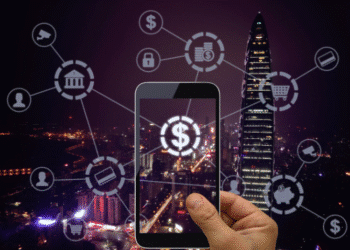Real-Time payment is different from ‘faster’ because it changes consumer behavior
Almost every country now has initiatives controlled by banks to do faster payments. The UK one is called – appropriately – Faster Payments and I have seen initiatives like this on almost every stop on the Fintech Global Tour. The Eurozone has SEPA. The US initiative is in the news because Chase recently went live on ClearXchange after a 4-year wait. Expect the newswires to be hot on payments as the Tech Big Dogs – Google, Apple, Facebook, Paypal, Alibaba, Amazon – jockey for position in payments.
Daily Fintech is written by entrepreneurs for entrepreneurs – you can tune in as we do our research in public.
First, here is my 101 Guide to Payments:
- There are many different types of payment:
- Pay a retailer in a physical shop
- Pay a retailer digitally (card not present)
- Pay a person (Person to Person or P2P)
- Pay an invoice (B2B)
- You don’t actually send money. You initiate a change in two ledgers – the ledger in your bank account and the ledger in the bank account of the person/entity that is sending/receiving money.
- Messaging and Clearing are different. We talk about the SWIFT rails as if it is a payment system. It is not, it is simply a messaging system that banks and big companies have access to. Messaging standards are critical. Sender and receiver have to “speak the same language”. Once you have a messaging standard, real time notification is simple. So you can receive a message – XYZ sent you ABC amount – in real time. That does not mean that the money is in your account. That has to wait until the two banks reconcile their ledgers. That is called Clearing or Settlement. The fact that a payment instruction is digital and real time does not change the fact that the clearing rails are batch processes built for the days of paper checks.
- Cross border is different. Now those ledgers are in banks in different countries. This is where you have to understand Correspondent Banking Nostro and Vostro accounts and the Interbank FX market.
- Security is job number 1,2 and 3. You won’t thank me as a payment processor if I did it fast but I lost your money. With so much money at stake, criminals who have all the same Moore’s Law advantages as the good entrepreneurs are seeking every possible angle. This is not a market where (to quote Mark Zuckerberg in the early days of Facebook) you “move fast and break things”. Agility is important but comes after security and scale in priorities.
Second, it now gets confusing/exciting because we have three waves of disruption hitting at the same time:
- Social.
- Mobile.
- Blockchain.
My underlying point of view is that:
Real-time payments changes the game.
The reason is simple. Real time changes user behavior. Going from 3 day to 1 day settlement is faster. Going to 2 hour settlement is even faster. In B2B those time differences are vital because time is money and float is highly valuable at scale. However to a consumer who is used to real time social media and news, a few hours seems ridiculously long.
The Real Time Web picked up momentum during 2010. I happened to be eyewitness to the iconic event that brought real time news into the mainstream.
Only now is the real time web starting to impact money.
Real time can mean different things. To a technology team in process control, military or High Frequency Trading (HFT) real time is measured in milliseconds (1,000th of a second). A few seconds is an eon to HFT and techies will snort derisively at applying the real time label applied to a few seconds, but it is short enough to have this conversation:
“I just sent you $100.
Ok, let me check.
What movie do you have in mind?
Got it. How about the new Star Wars?”
Note, I did not say $100 million. Technically it is possible to do big transactions in real time. Banks have been doing this among themselves for a long time. It is called Real Time Gross Settlement (RTGS). All these new faster payment mechanisms are simply opening up RTGS capability to the banks customers. Of course that does assume that banks have real time core banking systems, but that is the subject of a different post.
Big transactions is not a pain point. When Mega VC sends a wire after a closing, it works ok. Changing that comes at great risk of fraud. So I don’t expect change at that end of the payments market. The pain point is among consumers. That is what the Tech Big Dogs – Google, Apple, Facebook, Paypal, Snapchat, Alibaba, Amazon – are focused on. This is the Person-to-Person digital payment. It is paying a pal for your share of the lunch bill. Or paying for some cheese at the farmers market; this is where the micro business and consumer markets intersect. The key is that these payments don’t touch the banking network. It is wallet to wallet just like in the analog world except that now it is mobile wallet to mobile wallet. You interact with your bank to get cash into your mobile wallet or to put money from your mobile wallet into your bank. Or maybe you don’t. Maybe you simply spend the money in your mobile wallet.
This market is about to get red hot, but it is almost game over. It is red hot because PayPal will be doing their IPO at about the same time that Facebook debuts their payment system (headed by an ex PayPal executive) and SnapChat gets into payments to justify their nosebleed valuation. Meanwhile Apple and Google/Android continue to duke it out.
As the headlines start to fly in this market, remember two things:
- These are all within a single country – mostly launching first in the USA. They will then do the usual global rollout. This is not cross border.
- They are all based on sending a token. This is a digital bit, no harder to send than an email or text message. The token converts to your currency.
This is where I will bring on the flames by stating:
Mass rollout of Person-to-Person payments will make Bitcoin irrelevant.
Sure I can send Fred one Bitcoin as easily and cheaply as sending an email or text message. Why would I do that if I can just as easily send Fred $226.60 (the current price at time of writing)? If I send Fred one Bitcoin it might be worth $203.94 or $249.26 by the time Fred converts (10% price volatility in Bitcoin is the norm). Sure I can use a centralized exchange to ensure that I send exactly $226.60, but why would I do that when I can simply send $226.60 via any of the P2P payment processors? Bitcoin has suffered in my opinion from the messaging confusion of being three things:
- A store of value. This is the digital gold story. It appeals to people because it can never be devalued. However whether it will maintain value if the two other use cases don’t pan out remains to be seen.
- A currency to make payments with. Within a country with a stable currency, Bitcoin is a solution looking for a problem. The great hope of Bitcoin bulls is that it will replace a failed currency in countries such as Argentina. This is a subject for our Alternative Fintech Capitals tour.
- A payment rail. This will move to Blockchain systems. These may use Bitcoin using something like Sidechains or may use an interim store of value token such as Ether. The question is, if you wanted to design an interim store of value token, would you invent something as complex and volatile as Bitcoin?
OK, now that I have annoyed all the Bitcoin bulls, I will leave myself open by making three predictions:
- Banks will open up their payment processing engines. We have written a lot on Daily Fintech about Banks using APIs from Fintechs, but we will soon see it happening the other way. If the prize is security + scale + agility, the big banks already have the first two and can have the third by enabling an ecosystem of innovators.
- Facebook will be the biggest payment processor in the world. They will do this by aggregating small value payments for billions of people. Remember this when PayPal do their IPO.
- This will happen first in the developing world. This will be a “First the Rest, then the West” story. In the developing world consumers are also micro entrepreneurs; the same people who need to make payments also need receive payments. The four types of payment that we see in the West (Pay a retailer in a physical shop, pay a retailer online, pay a person, pay a business) all collapse down to one transaction type.
- Real time payments will disrupt e-commerce. Whole new models and ecosystems will emerge. I include the so-called sharing economy in e-commerce.
I will forecast these as inevitable but won’t forecast when. They should all start to happen during 2015.











